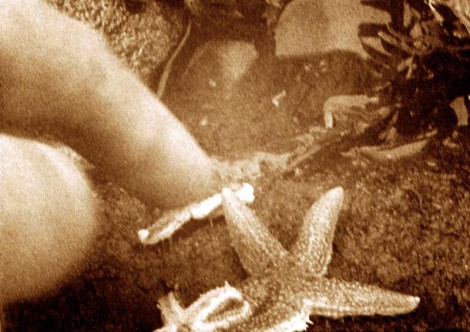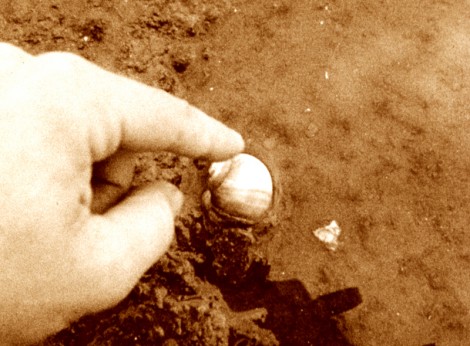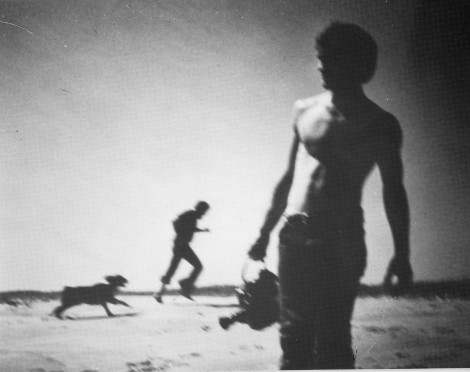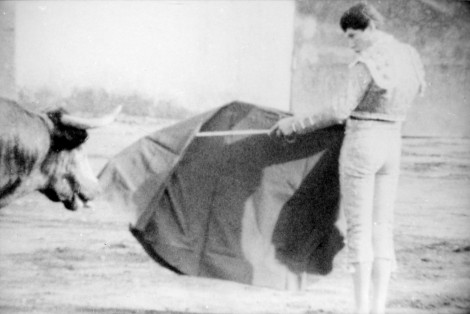A Map Turned to Landscape: Winnipeg Cinematheque, November 6th, and Continuing Events Nov 2010 – May 2011

“Nothing is built on stone; all is built on sand, but we must build as if the sand were stone.”
— Jorge Luis Borges
Winnipeg Cinematheque, November 2010 – May 2011
Curated by Brett Kashmere
A Map Turned to Landscape Saturday, November 6th at 7pm
Introduced by Brett Kashmere
Discussion with Rick Hancox, Philip Hoffman and Janine Marchessault to follow
“The “Escarpment School” receives its name from the Niagara Escarpment, the most prominent of several land shelves formed in the bedrock of the Great Lakes, located several miles southwest of Sheridan College. All of its central figures either grew up around, or lived/worked in some proximity to the escarpment.
This reference to a specific region, just an hour from the United States, and a transitional land formation is significant. While much of the “Escarpment School’s” history and activity is like cinema itself, spectral (now you see it, now you don’t), one manifest aspect is a desire for understanding through physical exploration and encounter with landscape. Taking their cameras on the road, to the ocean’s shoreline and across southern borders, the filmmakers featured here infuse rituals of masculinity with critical self-reflection and patient, poetic lensing; often conjoined in a diary or travelogue format.
Although varied in tone and texture, the films in this program share numerous qualities, including an attention to geography, a drive to record reality, the filtering of documentary material through individual experience, the looming presence of America, and a process-based, formalist approach to nonfiction. These characteristics in turn reflect the twin impact of the New American Cinema and its conterminous postwar movements, especially Beat literature, as well as the Canadian social documentary tradition, which were often viewed side-by-side in the “Escarpment School” classroom.”
Landscape (George Semsel, 1977, 16mm, 3 minutes)
A paint-by-number painting of a rural landscape is filled in using time-lapse cinematography, sometimes in ‘correct’ colours but more often with garish variations on natural tones. Periodically, the painting forms part of a collage of photographic and cut-out images.
Trains of Thought (Lorne Marin, 1983, 16mm, 10 minutes)
“In Trains of Thought Marin leaves the usual domestic setting of his films for a road trip to the Maritimes. Using the car’s windshield as his canvas, he conjures up dynamic scene changes thanks to an innovative optical printer he designed himself to accommodate his unique vision. Trains of Thought was invited to the Flaherty Film Seminar in 1983, but despite its immediate recognition, the film has fallen into neglect, like the rest of Marin’s remarkable body of experimental work.” (Rick Hancox)
Beach Events (Rick Hancox, 1984, 16mm, 8.5 minutes)
“This film completes a trilogy of landscape/poetry films, and was shot near the family home on the Northumberland Strait in Prince Edward Island. In writing the text for Beach Events, I wanted to challenge the cinema’s dominant present tense by imitating primitive ‘event’ poetry, referring superficially to action present on the screen, but gradually slipping out of synchronization with its referent. This practice, together with reading a kind of sub-conscious, internal monologue… helps the viewer transcend the spectacle of the present, and be aware of a larger temporal universe.” (RH)
The Road Ended at the Beach (Philip Hoffman, 1983, 16mm, 30 minutes)
“Film images, stills and sound collected over six years coalesce in The Road Ended at the Beach. Hoffman interrogates both the journey, involving famed American photographer and filmmaker Robert Frank, and the process of its documentation as/in film.” (Rivers of Time: The Films of Philip Hoffman)
His Romantic Movement (Richard Kerr, 1984, 16mm, 15 minutes)
“His Romantic Movement reenacts the drama of going on the road, Kerouac style; but what it really depicts is the dream of freedom turning sour. His Romantic Movement re-presents the male-band on the road living it up, taking drugs, drinking in the sights, and just traveling, significantly, to the Florida Keys. But it does not simply depict these activities, and in doing so reproduce that myth. By depicting members of the band as ugly and vicious, it deconstructs the myths of the male-band and conveys uneasiness with that celebration of manliness that was so much part of the ethos of Beat literature.” (R. Bruce Elder, C Magazine)
Somewhere Between Jalostotitlan and Encarnacion (Philip Hoffman, 1983, 16mm, 6 minutes)
“The bus stopped on the Mexican highway, placing us in full view of a young boy, motionless, on the hot pavement. In this film, the incident is revealed through a poetic text, derived from my written journals. The poetry mixes primarily with Mexican streetscapes, which compliment the text in a tonal sense. Most images are 28 seconds long, the ‘breath’ of the 16mm Bolex camera. A lone saxophone weaves its way through the narrative, blending to make stronger the tones and accentuations of the images.” (PH)
Mexico (Mike Hoolboom and Steve Sanguedolce, 1992, 16mm, 35 minutes)
“This high contrast, anti-travelogue benefits from a sharply ironic image track and a mordant voice-over that lends menace to the notion of direct address. Between the film’s title and its somewhat arch ‘erasure’ the subject shifts from Mexico to its Canuck observers.” (Cameron Bailey, Now Magazine)
Approximate Running Time: 108 minutes.
— – — — — — – — – — — – – — – – – — — – – – — – – – – – — – — – – – — – – – — – – – — – – — — — – –
Related Events:
THE CINEMA LOUNGE:
PHIL HOFFMAN INTRODUCES THE FILMS OF RICK HANCOX
Special Guest: Rick Hancox
Fri, Nov 5, 7:30pm – Winnipeg Cinematheque
Free Admission
MASTER LECTURE SERIES: CURATING AND CONTEXT
Instructor: Brett Kashmere
This seminar will focus on the role and responsibility of the curator in contemporary life, providing an overview of curatorial practice within the stricter context of moving images. This will include a consideration of the methods, procedures, and decision-making processes of media art exhibition; the shifting relationship between artists, institutions, programmers, and curators; critical and conceptual aspects of curating; curating for different spaces; and writing about artists’ work.
Sat, Nov 6, 2-4pm – The Black Lodge (Winnipeg Film Group Studio)
Free Admission (Seating Limited)






